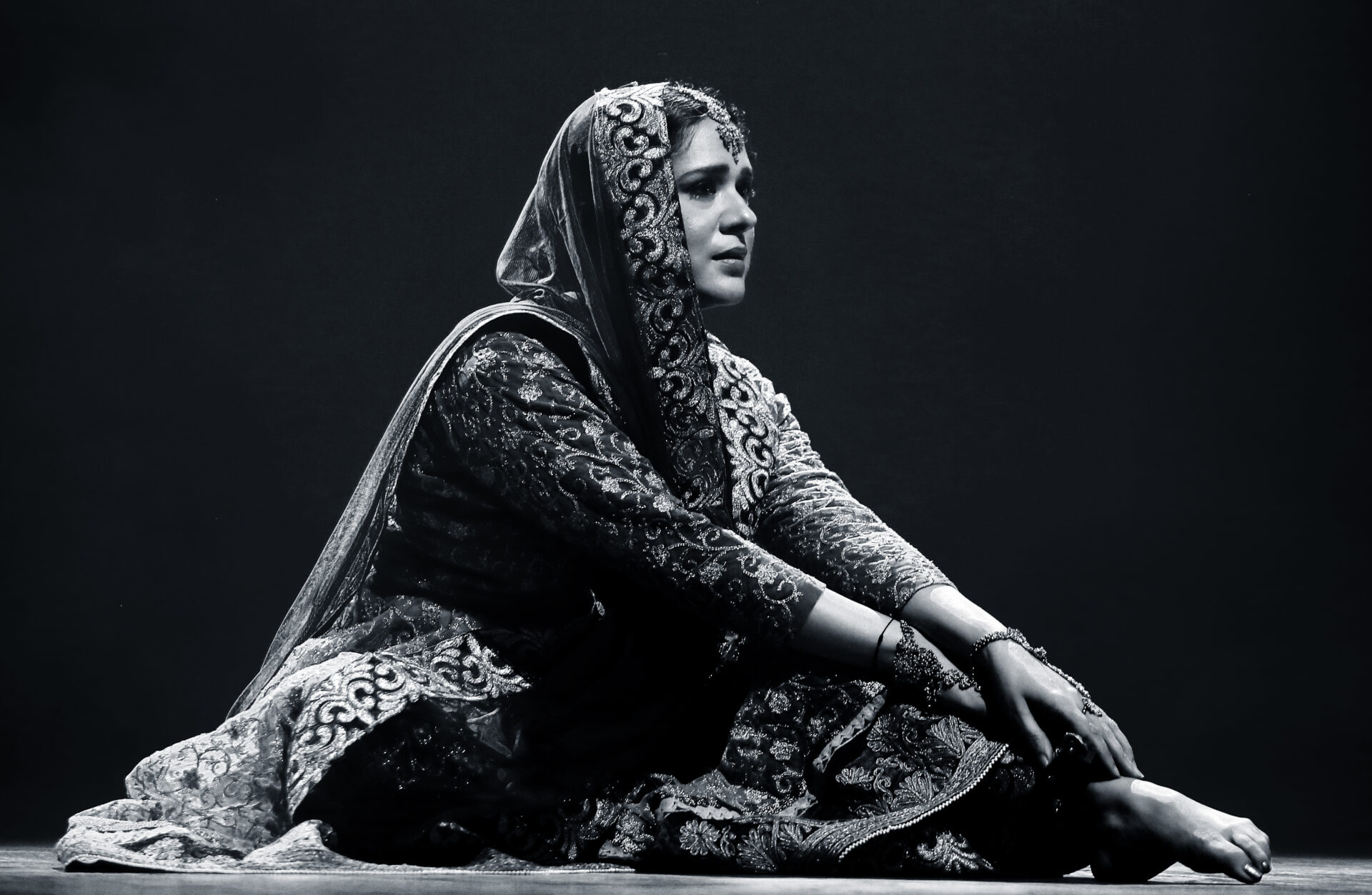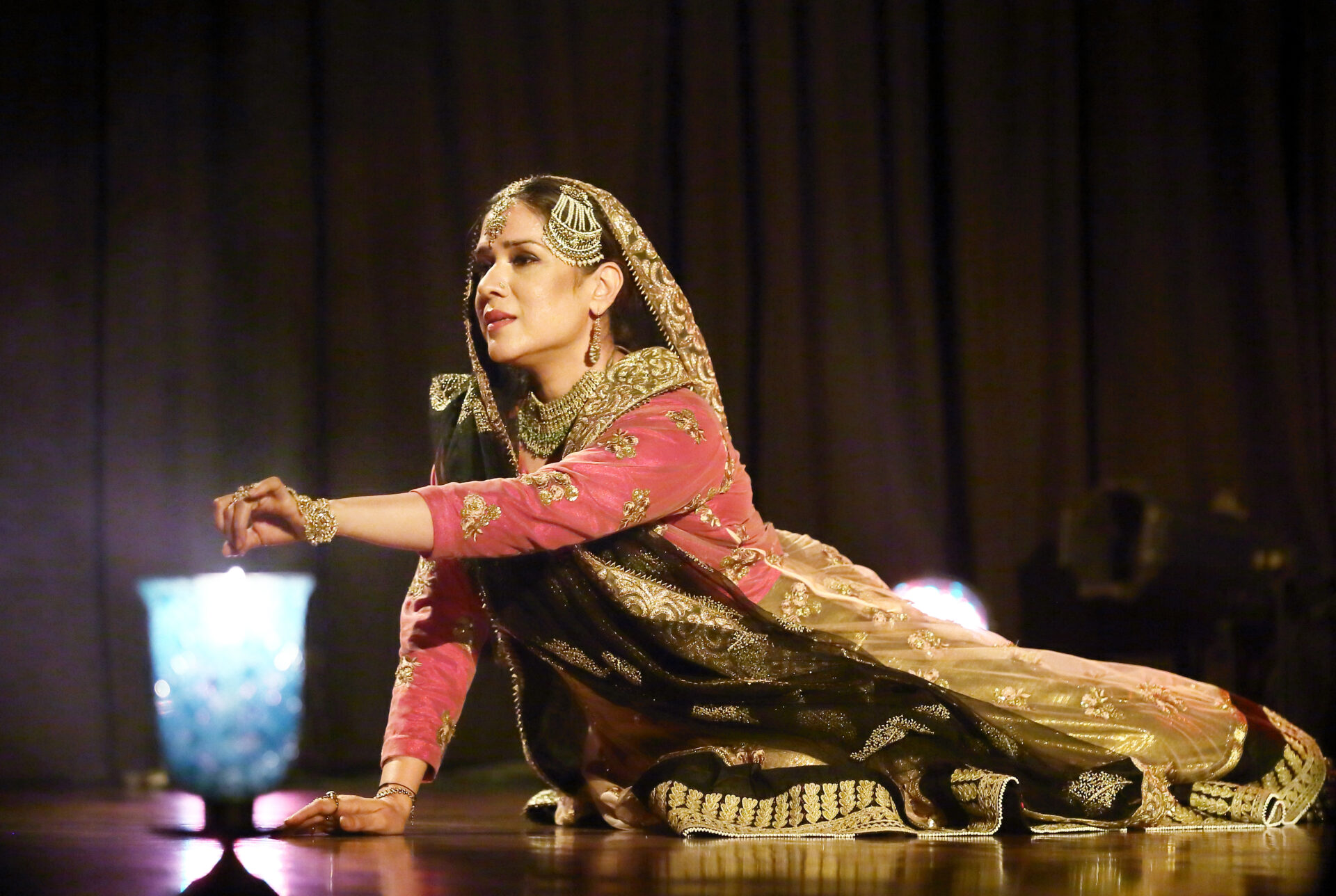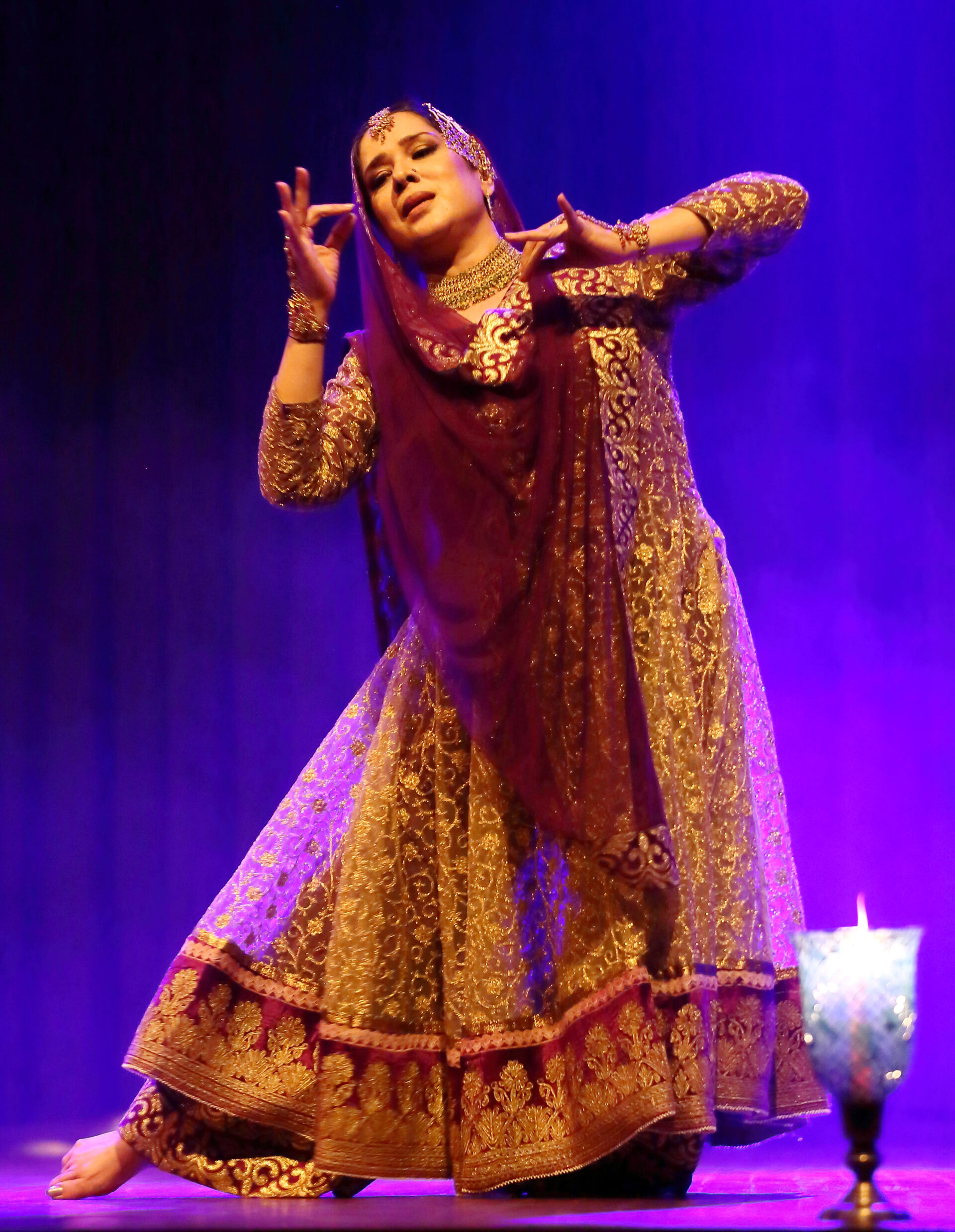On March 19, 1999, Manjari Chaturvedi, a Sufi Kathak dancer — a unique form that fuses Indian classical dance’s movements and rhythm with Sufi mysticism — met one of India’s last surviving courtesans, Zarina Begum, during an event in Lucknow’s Taj Hotel. Chaturvedi danced to one of the songs as Zarina Begum performed live. It was a memorable encounter, but afterward, they lost touch. It was a decade later, in the summer of 2009, when Chaturvedi performed in a concert called “An Ode to the Courtesan” that the two reunited in India’s capital, New Delhi.
“I did this concert at a time when nobody wanted the word courtesan to be associated with Kathak. They still don’t want it. There are very senior dancers who come from a different generation where they did not want to acknowledge it to gain respect. I don’t see a point in why we should not talk about these women with respect today,” said Chaturvedi.
The concert was a hit and people walked up to Chaturvedi, showering praises. Begum’s musical compositions left a mark on Chaturvedi who came to adore her. “It was at the time when I got interested in the compositions of courtesans not the lives of the courtesans because till then I did not know much about them,” added Chaturvedi.
Historically, courtesans, otherwise known as “tawaifs” flourished as entertainers, captivating the noble classes of the Indian subcontinent with their talents. These women were engaged in courtly and ceremonial roles, often as dancers and singers. Notably, historical records reveal that a subset of these women willingly contributed taxes, a testament to their esteemed position. Veena Oldenburg in her essay “Lifestyle as Resistance: The Case of the Courtesans of Lucknow” writes, “They [courtesans] were classed under the occupational category of ‘dancing and singing girls,’ and as if it was not surprise enough to find women in the tax records, it was even more remarkable that they were in the highest tax bracket, with the largest individual incomes of any in the city.”
Saba Dewan, an Indian filmmaker and author of the book “Tawaifnama,” started researching the tawaif culture in 2001. She explained how the term “tawaif” emerged relatively late, around the 18th century. However, female performers have been an integral facet of Indian society since ancient times, dating back to the Mauryan era, 322-185 BCE. Unlike in contemporary society, historically, courtesans’ roles were not deemed disgraceful or morally objectionable, as they were not synonymous with sex workers. “Tawaifs were recognized and given salaries as accomplished musicians. They had an identity as artists. Also, yes, they did take on lovers at their own discretion. That was their prerogative also,” added Dewan.
























